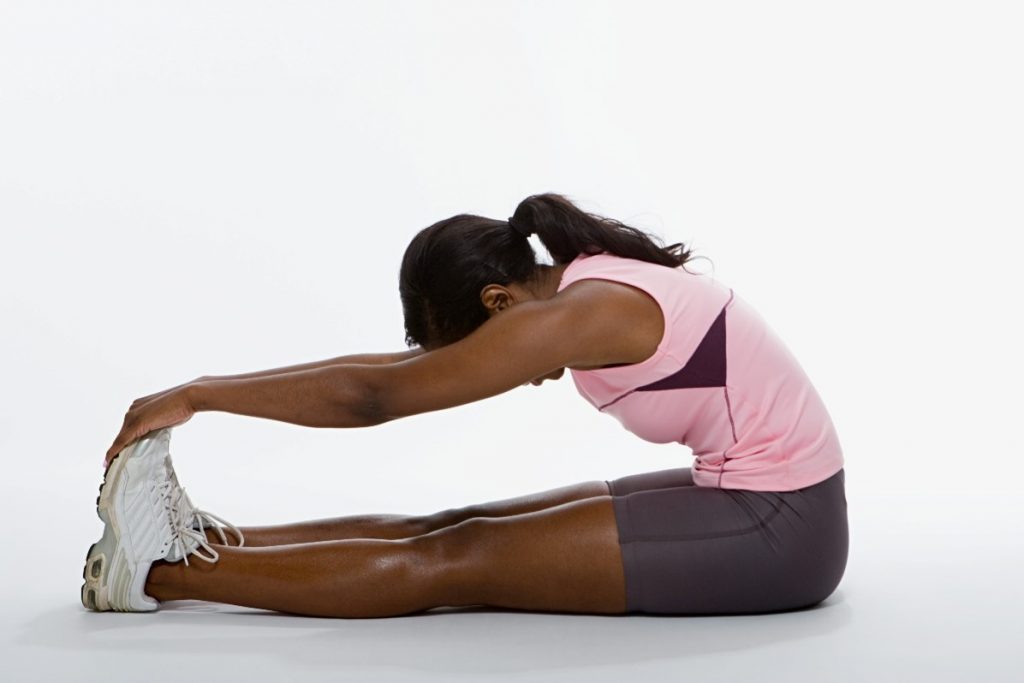At Legacy Health, Kecia Kelly holds the vital role of Chief Nursing Officer, but her passion extends far beyond the healthcare realm. A true advocate for holistic wellness, Kecia Kelly embraces the power of fitness in her own life. In the following article, Kecia Kelly delves into the transformative impact of Yoga on the mind, body, and spirit, offering valuable insights for those looking to elevate their fitness journey. Yoga is not just a form of exercise; it's a way of life. It's about achieving a deeper connection between the mind and body, which can bring transformative benefits to your life.
One of the most common misconceptions about yoga is that it's only for the flexible. Yoga is an inclusive practice suitable for people of all body types and fitness levels. The beauty of yoga lies in its ability to improve flexibility gradually over time. For weightlifters, this increased flexibility can lead to improved range of motion, better form, and reduced risk of injury during lifting sessions. Incorporating yoga into a weightlifting routine can enhance overall strength and stability, making it a valuable addition for athletes seeking to optimize their performance. Kecia Kelly explains that whether you can touch your toes or not, yoga can help you become more limber and increase your range of motion. It's about working with the body you have and gradually progressing at your own pace.
Incorporating yoga into a weightlifting routine offers a range of benefits that complement and enhance the overall fitness experience. Kecia Kelly of Legacy Health provides some key advantages below: Enhanced Balance and Stability: Many yoga poses require balance and stability, which can help strengthen the stabilizing muscles around joints. This is particularly important for weightlifters as it can improve control and form during lifts. Injury Prevention: Yoga emphasizes proper alignment and body awareness. This can help weightlifters avoid common injuries associated with lifting heavy weights, such as strains, sprains, and muscle imbalances. Increased Mind-Body Connection: Yoga encourages mindfulness and focused breathing, allowing individuals to be more in tune with their bodies. This heightened awareness can lead to better form and technique during weightlifting exercises. Reduced Muscle Soreness: Kecia Kelly explains that yoga incorporates gentle stretches and movements that can aid in muscle recovery. This can be especially beneficial after an intense weightlifting session, helping to alleviate soreness and stiffness. Stress Reduction: Yoga is known for its stress-relieving benefits. By incorporating it into a weightlifting routine, individuals can experience reduced stress levels, which can have a positive impact on overall well-being and recovery.  Improved Breathing Techniques:Proper breathing is crucial in both yoga and weightlifting. Yoga practices often focus on deep, controlled breathing, which can be applied to weightlifting for better oxygenation of muscles and improved endurance. Core Strengthening: Many yoga poses engage the core muscles, helping to build a strong and stable core. This is essential for maintaining good posture and form during weightlifting exercises. Active Recovery: Yoga can serve as an active recovery activity on rest days. It provides a gentle workout that promotes blood flow, aiding in the repair and recovery of muscles. Enhanced Mental Well-being: Yoga encourages relaxation and mindfulness, which can have a positive impact on mental health. Combining this practice with weightlifting can create a well-rounded fitness routine that benefits both the body and mind. By integrating yoga into a weightlifting routine, individuals can experience a holistic approach to fitness that addresses flexibility, strength, balance, and mental well-being. This combination not only improves physical performance but also contributes to a more sustainable and enjoyable fitness journey.
Improved Breathing Techniques:Proper breathing is crucial in both yoga and weightlifting. Yoga practices often focus on deep, controlled breathing, which can be applied to weightlifting for better oxygenation of muscles and improved endurance. Core Strengthening: Many yoga poses engage the core muscles, helping to build a strong and stable core. This is essential for maintaining good posture and form during weightlifting exercises. Active Recovery: Yoga can serve as an active recovery activity on rest days. It provides a gentle workout that promotes blood flow, aiding in the repair and recovery of muscles. Enhanced Mental Well-being: Yoga encourages relaxation and mindfulness, which can have a positive impact on mental health. Combining this practice with weightlifting can create a well-rounded fitness routine that benefits both the body and mind. By integrating yoga into a weightlifting routine, individuals can experience a holistic approach to fitness that addresses flexibility, strength, balance, and mental well-being. This combination not only improves physical performance but also contributes to a more sustainable and enjoyable fitness journey.
Yoga is not just a physical exercise; it's a journey of self-discovery and well-being. Whether you're a beginner or a seasoned yogi, there are always ways to take your practice to the next level.
Kecia Kelly says to invest in comfortable, breathable yoga attire and a quality large yoga mat. The right gear can enhance your practice by keeping you comfortable and supported.
A dedicated and comfortable space for your yoga practice is essential. Ensure it's free of clutter and distractions, allowing you to focus on your practice and cultivate a serene environment. The space you choose should promote peace and tranquility, which can deepen your connection with your practice and help you reach new levels of concentration and self-awareness.
Understanding and mastering basic yoga poses is crucial for building a strong foundation and enhancing your practice. Kecia Kelly of Legacy Health explains that these poses not only improve your flexibility and strength but also serve as the building blocks for more advanced postures. Here are some fundamental yoga poses you should get to know:
 Overcoming Common Challenges
Overcoming Common ChallengesChallenges are an integral part of the yoga journey. Frustration and setbacks are natural, but it's essential to learn how to navigate them. Embrace the process, practice patience, and be self-compassionate. Kecia Kelly of Legacy Health notes that yoga isn't a competition; it's about self-improvement and growth. Avoid overexertion and potential injury by respecting your body's limits. Listen to your body and adjust your practice accordingly.
Consistency is key to progress in yoga. Establish a daily practice routine that aligns with your schedule and goals. Whether it's a short morning session or an evening practice, regularity helps build strength, flexibility, and mindfulness progressively. Over time, you'll notice steady improvements in your practice and overall well-being.
Once you've built a strong foundation, explore advanced poses that test your strength, balance, and flexibility. Kecia Kelly of Legacy Health explains that arm balances, inversions, and backbends are some examples of advanced asanas that can push your limits and provide a sense of accomplishment. However, it's crucial to approach these poses with respect for your body's capabilities and a willingness to learn and grow.
Kecia Kelly of Legacy Health says that while attending group classes is valuable, a home practice allows you to delve deeper into yoga on a personal level. It's an opportunity to tailor your practice to your specific needs and goals. Whether it's a few minutes of meditation, breathing exercises, or a full yoga session, practicing at home helps you integrate yoga into your daily life and maintain consistency.
 Go Beyond Asana
Go Beyond AsanaExplore the other dimensions of yoga, such as meditation, pranayama, and mindfulness. These aspects can deepen your practice by promoting inner peace, mental clarity, and self-awareness. Going beyond asana allows you to tap into the profound spiritual and mental benefits of yoga, ultimately elevating your practice to a higher level.
By integrating yoga into your weightlifting routine, fitness enthusiasts can open up a world of holistic benefits. This combined approach enhances not only your physical strength but also your mental well-being, providing a comprehensive foundation for personal growth. Remember, it's not about competition, but rather a journey of self-discovery, balance, and inner peace. Embrace this synergy and relish in the rewards it brings to your overall well-being."